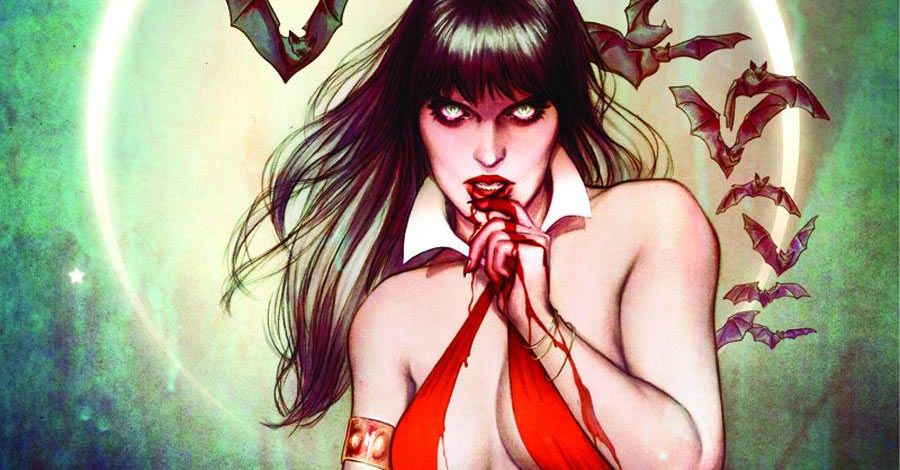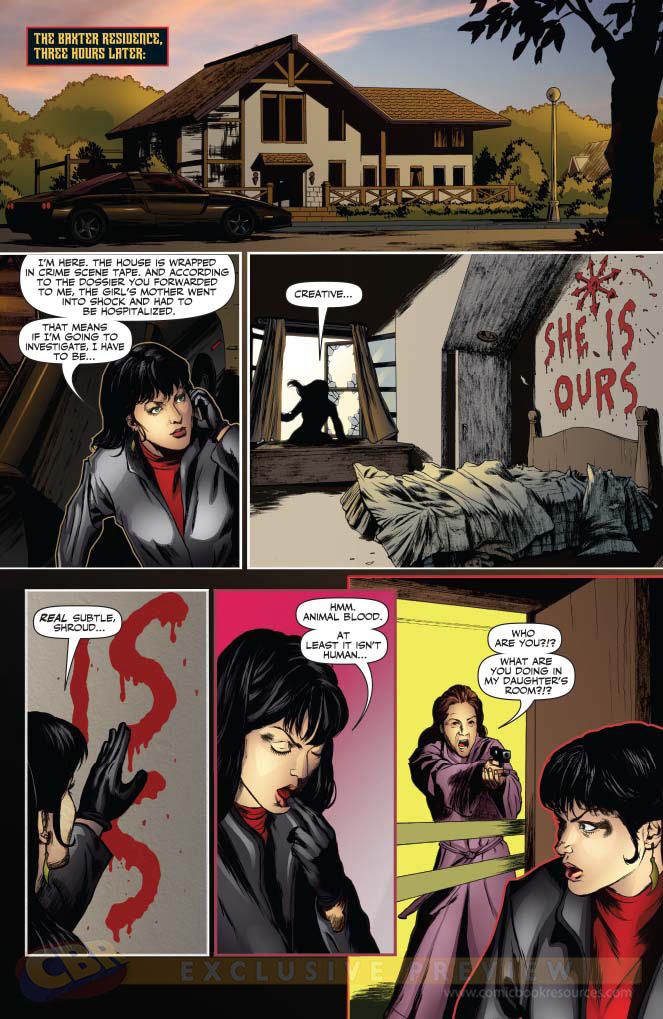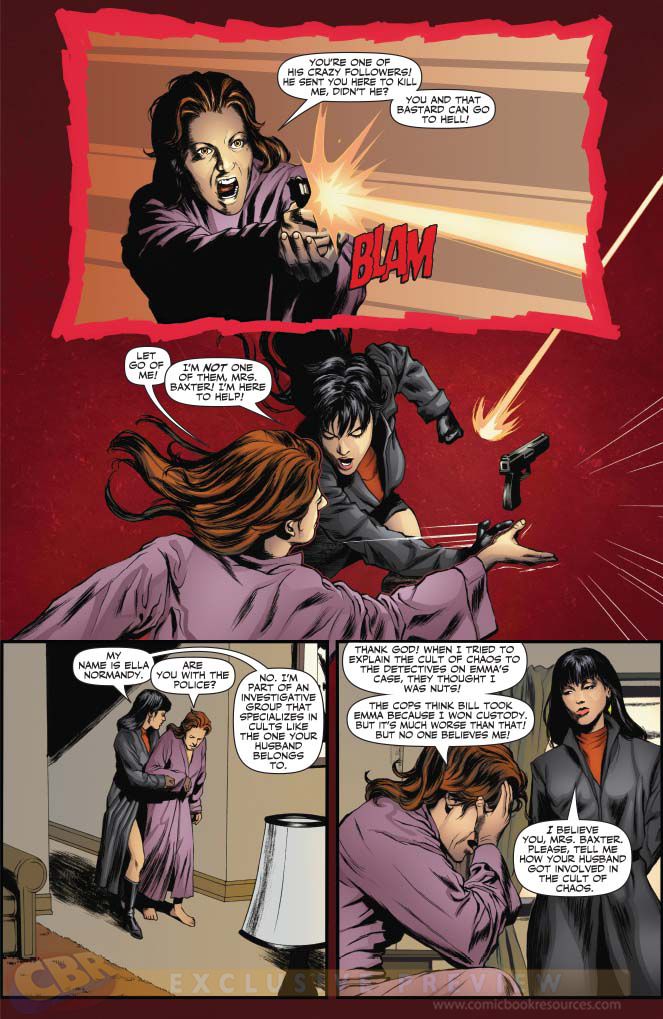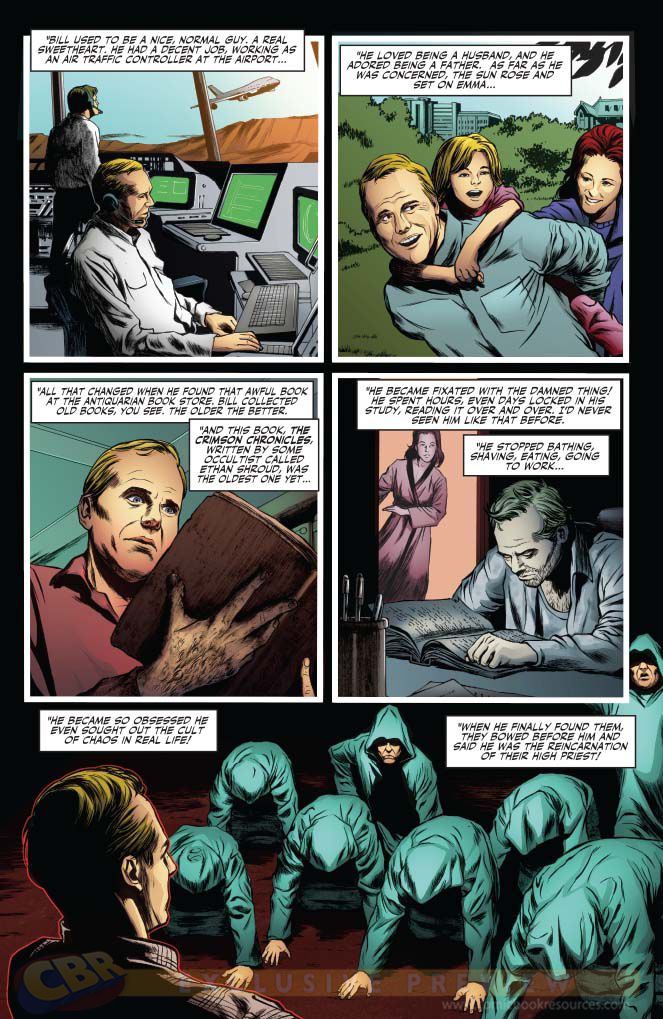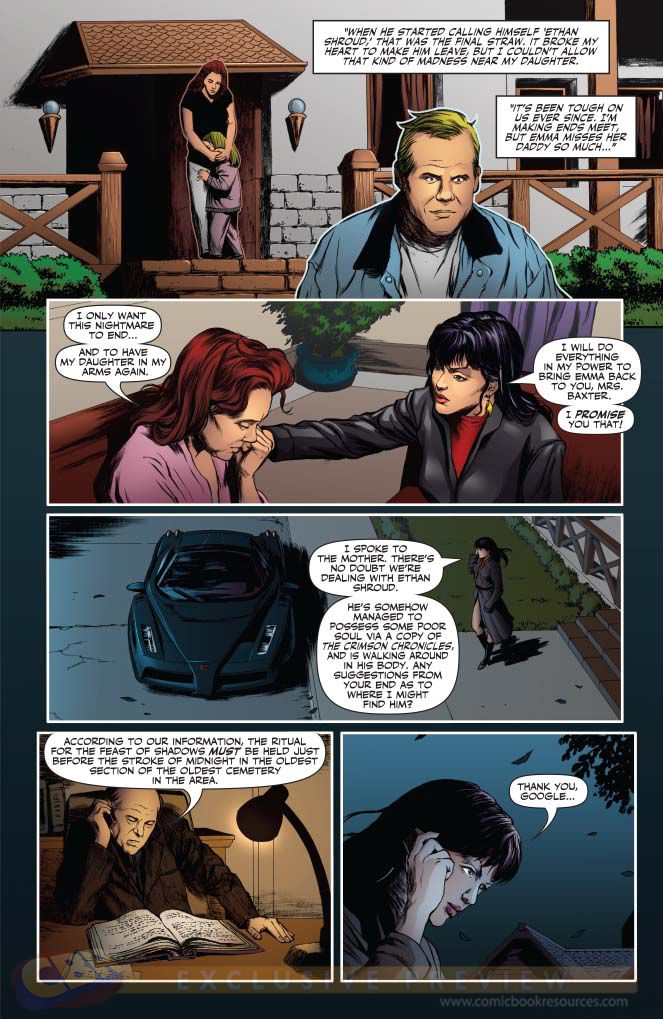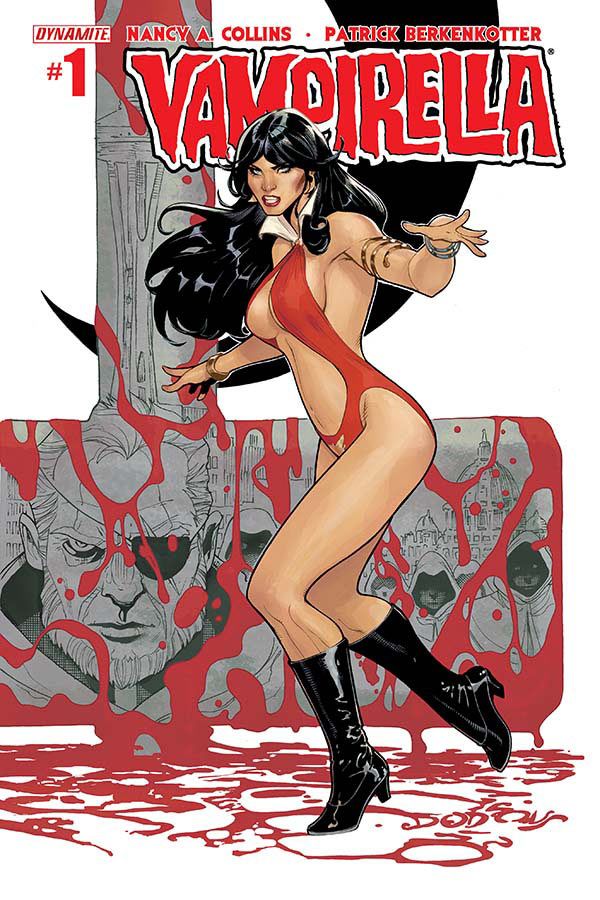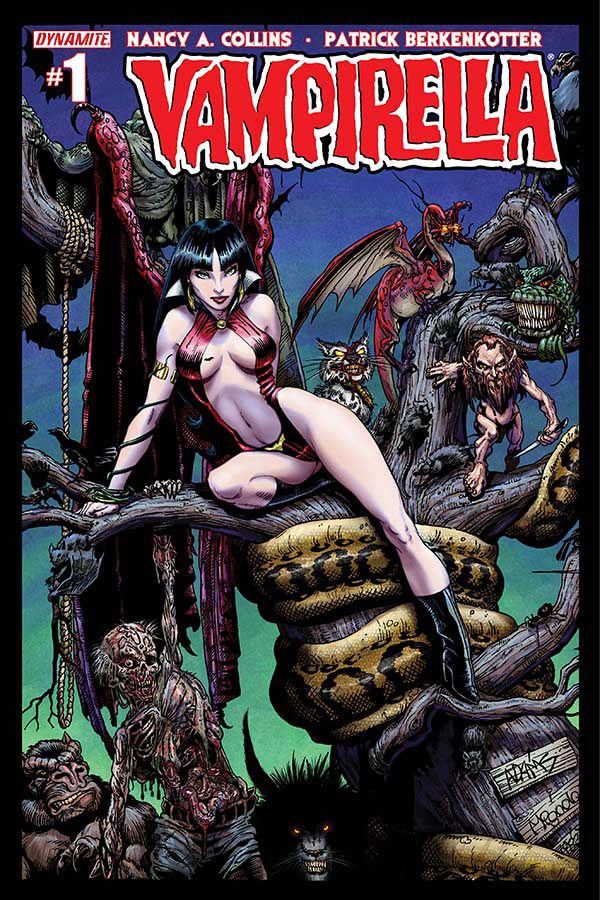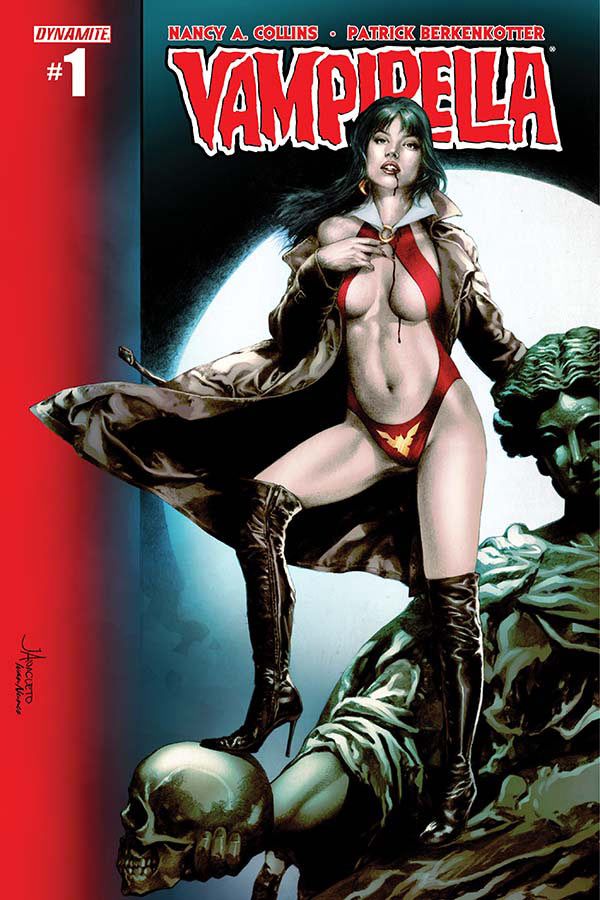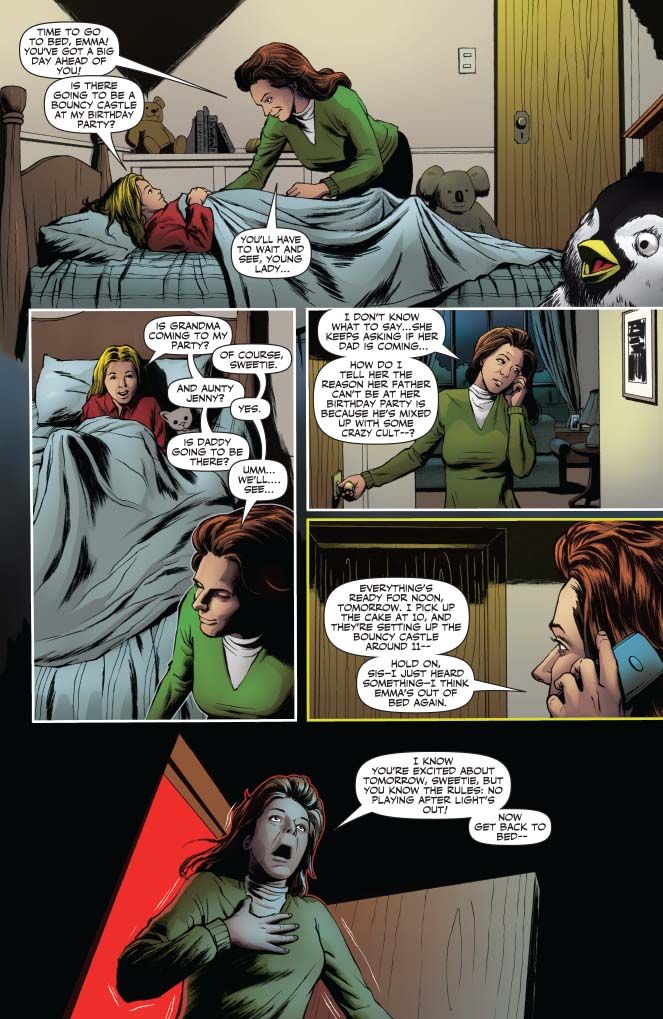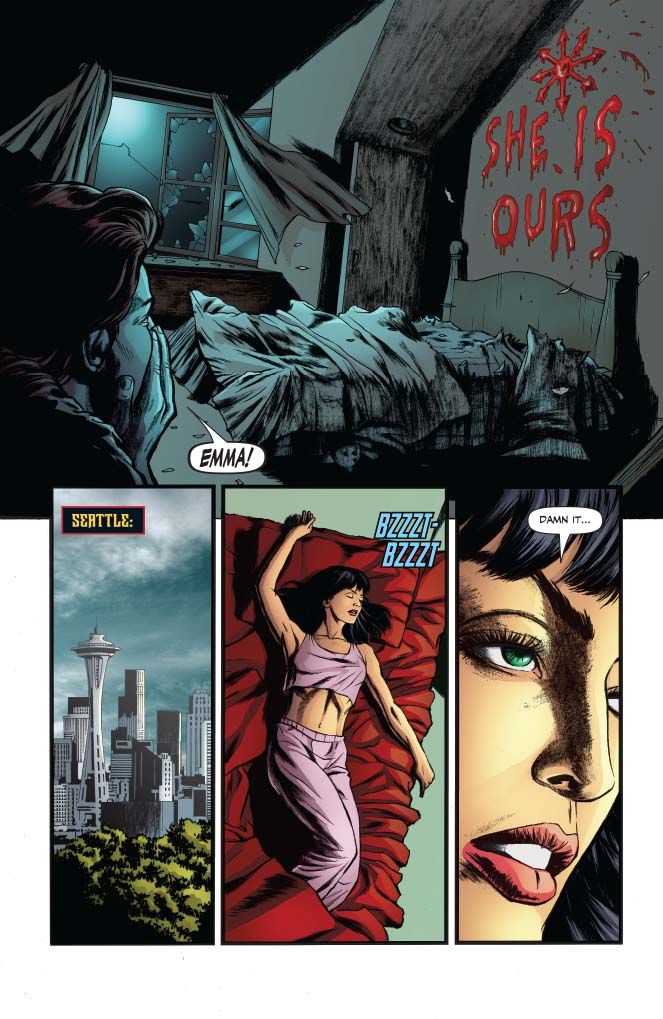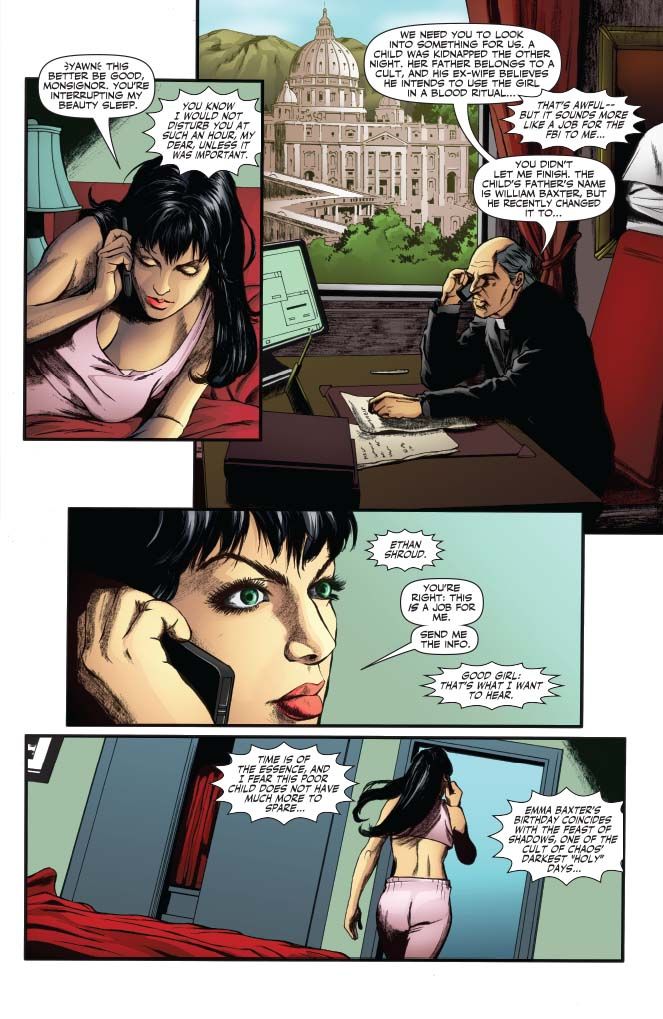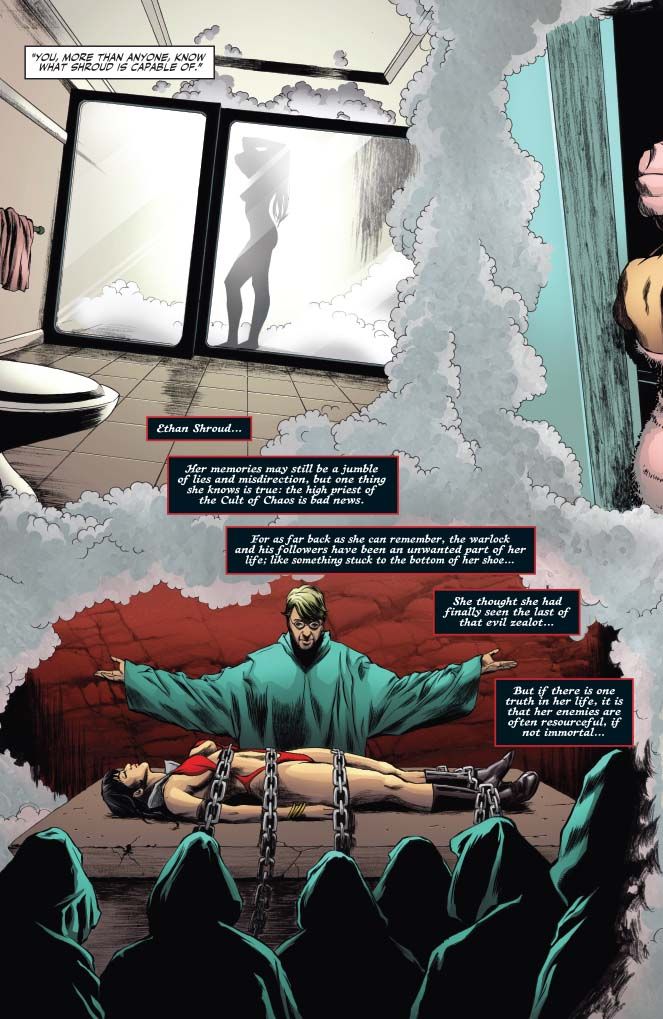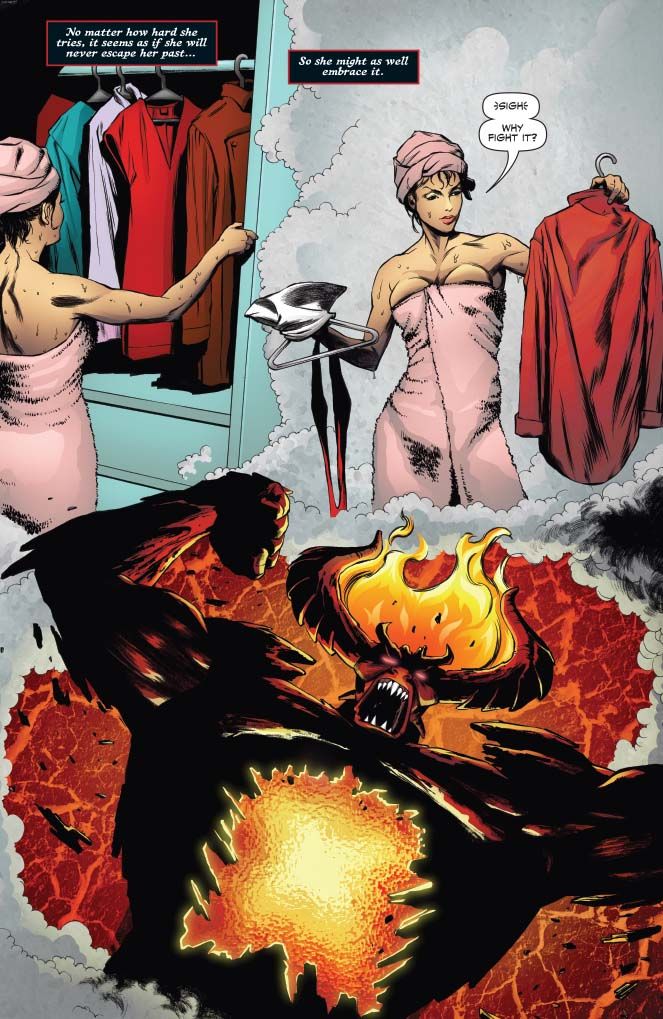As a professional writer, Nancy A. Collins cut her teeth on vampire fiction, tracing the exploits of hot-blooded heroines like Sonja Blue ("Sunglasses After Dark") and the mean girls of the prestigious Bathory Academy ("VAMPS"). In the comics realm, she's walked with the Swamp Thing and revved the motor of Leatherface's chainsaw. Now, she turns to the medium's most iconic and enduring bloodletter, Vampirella.
With a new #1 issue from Dynamite Entertainment comes a new threat in the form of Father Nicodemus, leader of the Malleus Maleficarum, aka The Witches Hammer, an elite monster-hunting team based deep within the Vatican. But the real fever in the blood for both Vampirella and Collins is the viral strain that spurred the character to paragon status. Vampirella is so much more than a starched collar and scarlet singlet; the character speaks to the saturation of horror at its most playful, and of sexual revolution. Forty-five years after her first appearance, Vampirella continues to sneer at the dawn.
CBR News spoke with Collins about Vampirella's origins, how she's working with series artist Patrick Berkenkotter to ensure the title has the proper mix of sexy and scary, and her plans to ensure Vampi maintains her proper place in vampire lore, right at its jugular.
CBR News: Having been around for 45 years, how does Vampirella stand out even now, when so many vampire characters continue to emerge in the public consciousness?
Nancy A. Collins: I think Vampirella's staying power can, in part, be attributed to her being created at the right time and the right place. She's the result of Women's Lib, the Sexual Revolution, underground comix and grindhouse, and, as such, she clearly left her mark on a lot of young readers, both male and female, on the cusp of adulthood.She also benefited from not only artists with Trina Robbins' underground cache, but Frank Frazetta's commercial appeal, being involved in her conceptualization and initial launch.
Vampirella was one of the first strong female characters designed for and embraced by the Baby Boomer generation, and, if I remember correctly, she is the first vampire portrayed in comics as a "hero" (at least as a reoccurring character). Whether intentional or not, she broke the rules of what was considered acceptable in a female protagonist, especially in comics.
You've mentioned wanting to take Vampirella back to her roots in horror. What elements do you find most attractive about the character and her world? What are the threads you want to tug?
I want to recapture some of the chills & thrills that were part of the old Warren experience. Getting caught with "Vampirella," "Eerie" & "Creepy" was tantamount to your parents finding a stash of "Playboys" under your bed. What made them verboten wasn't just the nudity or adult situations, but the juxtaposition of those old bugaboos, sex and death. I want to instill a little of that old Warren vibe -- not just shock for shock's sake, there's no art in that, but as a part of the storyline and the characters. "Vampirella" #3 is the perfect example of what I'm trying to shoot for.
Horror is such an atmospheric, sensual presence. In film and radio, even the sounds are iconic, the stings and the shrieks. In comics, it's all visual. What do you look for in the art?
Well, with Vampirella, the most important aspect is whether the artist can draw an attractive woman or not. As it turns out, my artist, Patrick Berkenkotter, knows how to draw Vampirella without making her look like a bodybuilder or a porn star. The other thing I look for is an ability to understand mood, because horror is really about setting the tone. 90% atmosphere, 10% monster.
What conversations are you having with Berkenkotter about Vampirella herself, and the language of horror storytelling?
The first thing I did was recommend that Patrick study the first three years of "Vampirella," which you can do on Amazon using their 'look inside' feature, without investing megabucks in the hardback archives or contributing to piracy. I also send him a lot of visual aids, such as pictures of certain locales, furniture, clothing, etc. I used to do this for my artists back in the 1990s as well, but it's a lot easier now thanks to email attachments!
You're probably best known for your prose, but you've already cut your teeth in the comics industry. Not every novelist has made a successful transition into writing comics. Very few can claim to have written Swamp Thing. Can you speak to the challenges of this medium, perhaps especially as they relate to horror?
Writing horror comics can be challenging, especially those featuring reoccurring characters like Swamp Thing and Vampirella, as they tend to become tainted by superhero tropes, whether you mean them to be or not. Superheroes are so plentiful, at least in American mainstream comics, they're kind of like background radiation -- there's no escaping 'em.
But what makes horror truly work isn't fistfights with monsters, butdepicting their impact on everyday, innocent people, be it the mother of a kidnapped child, an expectant father, a tourist on holiday, or a lonely old man. The world is full of dangerous side streets and dark alleys -- and I hope readers will want to follow Vampirella down them.
"Vampirella" #1, by Nancy A. Collins and Patrick Berkenkotter, goes on sale June 4.

